Well, fiber folk . . . I’ve been at it again! I’ve found a lovely indie dyer for you: Dawn Brown of Independence Wool–a Texas-based mill! I discovered Dawn when I noticed an Isabell Kraemer IG post that featured a GORGEOUS purple sweater knit in a yarn called Texas Tweed Lite (to be restocked soon!!). I had to know more and Dawn was generous enough to spend some time with me via email so that I could learn more about her yarn and the mission of Independence Wool. It’s quite a story and one that includes the acquisition of goats, a mill take-over, and so much future potential–and all of this after a full career as a medical doctor! What?!? I love it! The interview is below–along with some beautiful images of Dawn, her yarn, and the mill. And, on the next episode of the podcast, we’ll get down to business with a giveaway from Dawn–you won’t want to miss it! Enjoy!
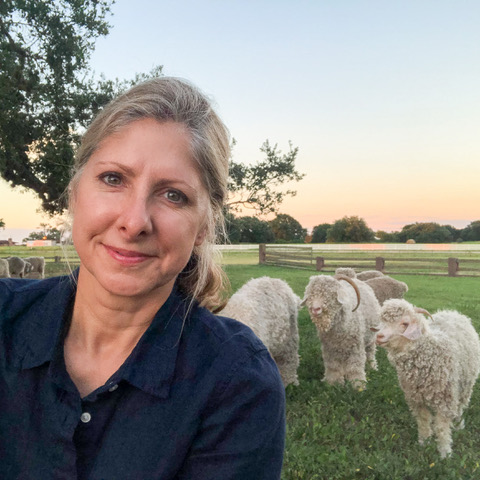
Dawn Brown
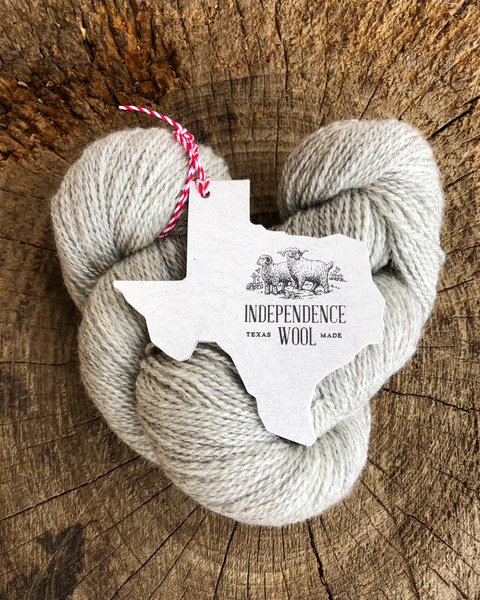
Texas tweed: 50/50 Rambouillet, natural grey mohair
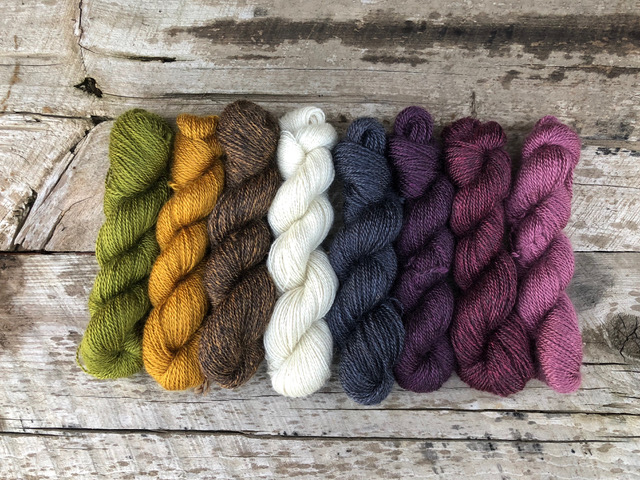
100% mohair Diamond DK

Mill building
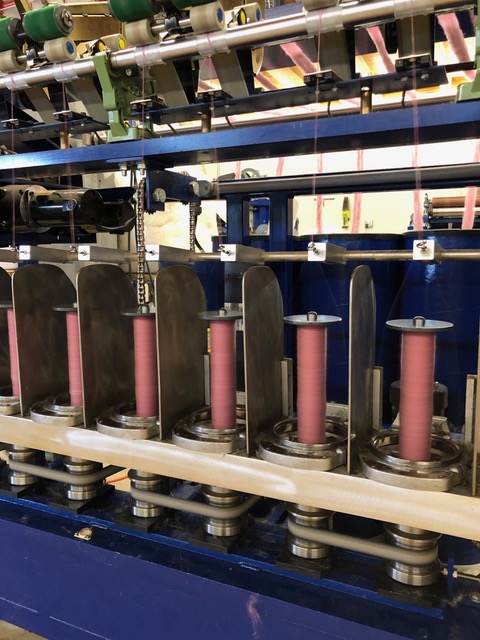
Spinner
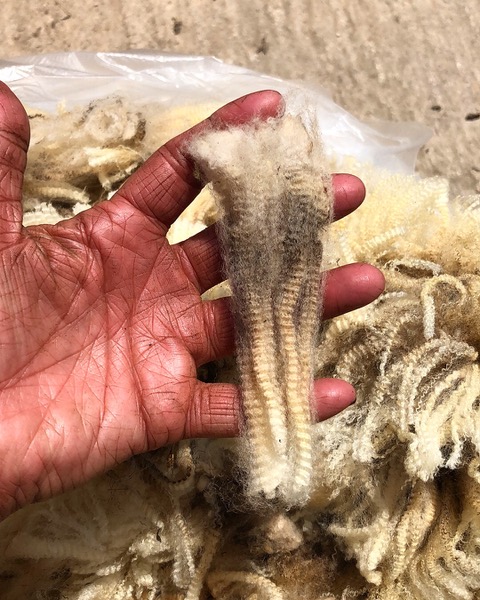
Raw wool during spring wool classing, sourcing wool for the mill
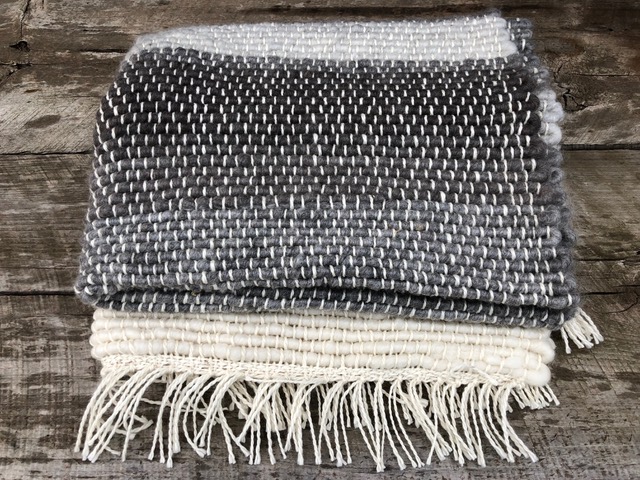
Mohair Rug
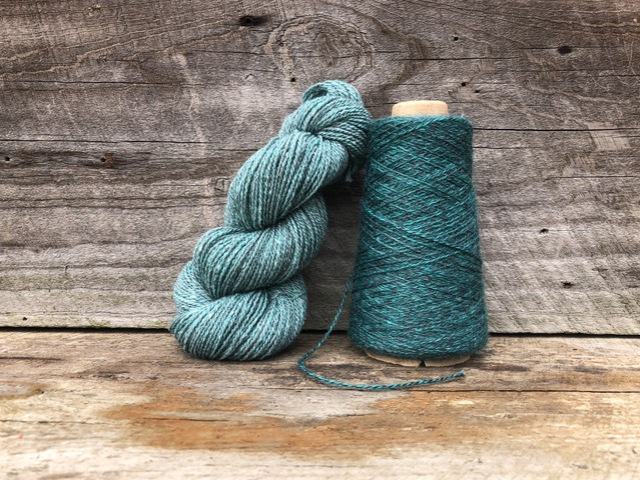
Texas Tweed, Diamond DK . . . Balmorhea colorway
KTS: You are based in Texas, have a flock, and run a mill . . . but how did you get started AND/OR how did your longtime multigenerational farm get its start? Where did the inspiration for Independence Wool come from?
Dawn: Well, I’m a born and raised Texan…of many generations! My family raised fine wool sheep beginning in the 1870s, both my mom’s side, as well as my dad’s family. However, over the years, most have left the land and ranching behind. But …I am back at it! My educational background is in medicine–I’m a retired OB/GYN–so the mill is an encore career for me. While in private practice, I suffered an injury to my neck and shoulder which ultimately led to retiring my surgical practice and entering nonprofit, rural women’s health in Northeast Arkansas, working in an ambulatory community healthy clinic, providing prenatal care and general gyn health services. The injury also led me to learn how to spin and knit as a way to maintain and aid in my manual dexterity. While in rural Arkansas we started a farm; I have always loved goats! So, fiber goats it was! Also, in this rural area, happened to be a cottage industry fiber mill that came up for sale as we were then moving back to Texas. My parents, back in Texas, were having health issues, and I needed a change in work-life balance. So in 2015, I left medicine and opened the mill on our Texas farm. We started with 12 goats in Arkansas in 2009 and now our herd is almost 100, mostly Angora goats. We also have added a growing flock of natural colored Rambouillet, currently 16.
Our driving mission with Independence Wool & Mohair is to be a regional mill, processing the bountiful fibers grown in our state; and in doing so, help to support and celebrate our Texas sheep & goat ranching industry. Also, in working solely with fibers produced on our farm, or in our state, our footprint for yarn in small. I call it intensely local, grown and spun.
Our farm/mill is named for our location: we reside in the the historic village of Independence, Texas. The village dates back to the Republic of Texas–when Texas became its own nation (1836-1846). My dad’s family came to a nearby area in 1821 when what would become Texas was a territory of Mexico. His line is one of the original 300 settlers to migrate to Mexican Texas and receive land grants to start building their new life. This is what is called “Austin’s Old 300”. Interestingly enough my ancestor that received a Mexican land grant in 1824, a league and labor of land, was a woman, a widow. Her name was Elizabeth Tumlinson. My middle name is Elizabeth, and my maiden name is Tumlinson. The women of pioneering Texas were spinners, weavers of wool, flax, and cotton.
KTS: One of your products is mohair (from your own flock and flocks with known provenance), why did you decide to focus your work on this particular fiber?
Dawn: The Edwards plateau region of Texas is Angora goat heaven! Texas is the largest mohair producer in the US…and second …or third now..in global mohair production. So it is plentiful right here at home!
It is an amazing fiber, known as the Diamond Fiber in the textile industry, it has unmatched lustrous dye properties. It is lovely on its own, or blended with wool. Kid grade mohair in Texas is exceptional quality due to almost 150 years of genetic selection. The coarser grades of mohair are also very desirable for the equestrian industry as a chosen fiber for saddle cinches. Angora goats are known for a fairly docile temperament, and are excellent foragers.We love them! The Texas landscape was so much better off at its peak of 4.5 million goats; they controlled the brush and cedar overgrowth that now is a problem in many areas of the Texas Hill Country.
By the way, Texas also has one of the finest (lowest micron) wool clips in the nation, mostly due to commercial Rambouillet sheep being the predominate breed raised, along with some debouillet and Delaine merino.
KTS: Who are your biggest crafting influences/inspirations?
Dawn: From a mill standpoint, Mountain Meadow Wool in Wyoming; I love what they are doing for their state’s wool ranching industry. We are a smaller scale mill, but definitely inspired by their work.
The American clothing company, Duckworth, founded by the Helle Rambouillet sheep ranching family in Montana–grown, spun, dyed, cut and sewn in the USA. Their production of wool garments for activewear is a game changer–I wear wool year round in Texas!
Sandi Brock, of Sheepishly Me on Youtube…incredibly inspiring Canadian sheep rancher; she does it all!
I am also inspired by the work being done in the UK–with their amazing efforts to recognize the importance of breed specific wool, to support and celebrate their farmers and flocks.
The Shetland Island culture and nordic countries with their color work heritage…very inspiring.
From a knitting standpoint, Isabell Kraemer–shawls and sweaters, Virginia Sattler-Reimer, Marie Wallin, Kristin Drysdale–for color work.
Handspinning/fiber arts/dye work- Bren Boone; every craft she masters beautifully.
Podcasts- Fruity Knitting, Sandi Brock – Sheepishly Me
KTS: How do you decide on colorways for the yarn?
Dawn: I do a mood board of sorts, collecting pages of color inspirations from magazines–I am a hoarder of any and all British Home and Garden Magazines!! Favorites include Country Living, British Homes and Interiors, British Period Living. I always find a few sheep in the pages! And, of course, always inspired by our vast and varied landscape in Texas. No shortage of colors!
I use Greener Shades Dyes–only 9 to choose from, so you can create your own unique palette through blending. The dyes are GOTS certified. We mostly dye in the wool or mohair, only occasionally skein dyeing.
KTS: Any advice for folks who might want to start a mill someday or process their own yarn with a mill such as yours?
Dawn: Having a good foundation in hand spinning is a huge asset. Learn about all of the fiber types, and their spinning properties. You must enjoy being dirty, lifting heavy things, standing on your feet for long hours, and working with wool as much as with machines.
There isn’t really a great mill “college” out there, but try to get in some work at a mill to see if it is a good fit. We started an apprenticeship at our mill this year; our first fellow has been here since February. He wants to start his own alpaca processing mill in the near future.
KTS: What’s your process for establishing relationships with designers and do you have plans to expand your pattern offerings?
Dawn: We’re new to this area, so I can’t say that I have a process yet, really. I would love to have designers work with our yarn, including our 100% mohair yarn.
I recently met Isabell Kraemer at a knit retreat this summer; the retreat was held very near a wool and mohair ranch that I use as one of our fiber suppliers, so I gifted her some skeins from that particular ranch. She loved them and very quickly designed a pattern with them! I about fell over! She is such an amazing designer, great teacher, and wonderful company at a retreat. She publishes patterns a lot faster than I can make the yarn, lol!!
KTS: Where can folks find your shop? or find out more about you?
Dawn: Website and Shopify store www.independencewool.com
KTS: What’s new on the horizon for Independence Wool?
Dawn: Increasing production with mill apprentice, artist in residence, and branching out into finished products, such as woven wrap blankets, throws, rugs.
We added a commercial sized dye vat and planning for some other equipment additions. Also we have a Youtube channel planned: The Great Texas Wool Project, which will be about mill processing and yarn, but really more about wool and mohair production–the agricultural side of the industry. It’ll be about connecting fiber artists to where their yarn really starts.
***
Thanks so much, Dawn, for sharing your history, inspiration, yarn and a bit about your life with us! I love meeting new people (and sheep!): if you are an indie dyer, a hand spinner, a shepherdess, a small flock owner, a mill operator, or a wool trader, I would love to feature your work on this site. Please get in touch via email or Ravelry by clicking the “About” tab (above) Happy knitting! 🙂

Terrific interview! As a native Texan, I was fascinated to learn more about the state of the fiber industry in Texas. I had no idea there was as much going on as it sounds like there is. 🙂
LikeLiked by 1 person
Thanks so much, Melinda! Yes, I forgot that you are from TX! Hoping you’re well!
LikeLike
Good morning Melissa, I am totally thrilled you interviewed Dawn. I was very fortunate to be able to tour her mill last year. She is charming & her mill is so organized & beautiful. It is spotless & her sheep, goats & dogs – beautiful Pyrenees, have such a wonderful place to live. You can tell they adore her. I did not want to leave! Her yarn is fabulous!!! I also took home some of her roving: mohair & rambouillet…we are out of town or I’d attach a picture – so lovely!!! I hope you get a chance to try either one. I’m sure you will love it…so rich & soft. Dawn really knows her stuff. I wish her the best always. Thank you again for interviewing her – I enjoyed seeing her & her mill again. Sincerely, Joanie Patton Whidbey Island Washington P.S. Love your podcasts!!!
On Sun, Oct 27, 2019, 6:03 AM Knitting the Stash! wrote:
> knittingthestash posted: “Well, fiber folk . . . I’ve been at it again! > I’ve found a lovely indie dyer for you: Dawn Brown of Independence Wool–a > Texas-based mill! I discovered Dawn when I noticed an Isabell Kraemer IG > post that featured a GORGEOUS purple sweater knit in a yarn c” >
LikeLiked by 1 person
Hi Joanie! So lovely to hear from you and to hear even more about Dawn and her farm. I absolutely love her yarn (she send some for a giveaway and a little extra for swatching!). I bet the mohair roving is amazing! Maybe I should try to get some for spinning 🙂 nothing wrong with a little stash enhancement! I hope all is well with you and thanks again for your lovely note!
LikeLike
Pingback: Episode 66: Test Knits, Special Guests, and Mohair Magic | Knitting the Stash!
Wonderful interview! Fiber mills are amazing places. Maybe you could post a video of the mill in action.
LikeLiked by 1 person
Lovely idea, Kim! I’ll look into it!
LikeLike
Pingback: Fiber Mill Feature: Blackberry Ridge Woolen Mi | Knitting the Stash!